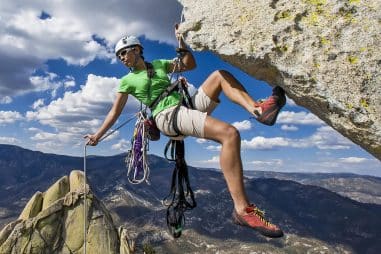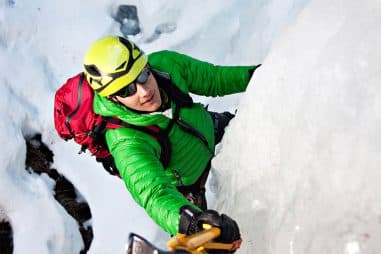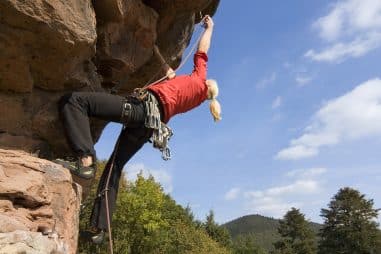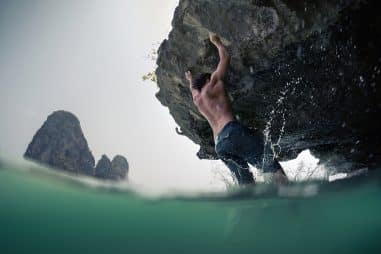
Climbing & Rappelling
Rock climbing is the sport of climbing rock faces, commonly called walls or crags, boulders, and indoor climbing walls. If you’re new to rock climbing, the language of the sport may be interesting, puzzling, and scary, or all of the above! Here are some terminologies you’ll need to know to differentiate between the many types of rock climbing.
Free climbing is what most people classify as “rock climbing.” In this sport, you are dependent on your own skill and strength as you ascend a rock. You use your body to climb and rely on your hands, feet, arms, legs, back, and core, etc.
Free climbing should not be confused with free solo climbing. Free soloing is a kind of free climbing that includes climbing routes without the use of any aids or protection, such as trad gear, bolts, ropes, or anything to stop a fall. It is considered by some to be the purest form of climbing, but it is also highly hazardous since a single mistake can result in death.
Compared to other climbing disciplines, minimal equipment is used in free climbing. To protect yourself in the event of a fall, most free climbers utilize a harness, rope, and other climbing equipment. Along with bouldering, lead climbing (or sport climbing) and top-roping are all under the free climbing category.
When there are protection points permanently fastened into the wall that you attach to as you climb from the ground up, it is called lead climbing, also known as sport climbing. On the other hand, trad climbing is when you go outside and lead climb on a route with no fixed bolts.
In top-roping, there is already an anchor at the top of the route. The belayer is tied to one end of the rope, which is pulled up through the top anchor, while the climber is attached to the other end. Top-rope climbing, like bouldering, is the form of climbing that most novices begin with, especially at a climbing gym.
Another type of rock climbing is speed climbing. Climbers that participate in speed climbing focus primarily on ascending as rapidly as possible. Both sport and traditional climbers hold speed contests; however, they are more often held in indoor gyms.
The last two common categories of climbing you will hear are deep water soloing or DWS and ice climbing. Deep water soloing is a kind of free solo climbing that takes place over a deep body of water, providing protection from high falls for free climbers. In contrast, as the name suggests, ice climbing is a discipline in which competitors use ropes and other protective gear to climb vertical ice formations such as frozen waterfalls or ice-covered cliffs.
Finally, we have the two terms abseiling and rappelling. Though they seem to be different, abseiling and rappelling both mean the same: to descend from a structure using a rope and other equipment. The main difference is that the word rappelling is used in the United States, and abseiling is preferred in the United Kingdom.
Whether what type of rock climbing you prefer, it is guaranteed to be an exciting and fun activity. It will challenge you physically and mentally. It will stimulate your senses, especially outdoor climbs, and will leave you wanting more. Just be sure to start simple, gradually progress, and follow safety protocols.









